What’s Happening in the Garden? May
May in Chicagoland can be taxing on the edible garden. As spring transitions to summer, we experience light frosts, 80+degree days, hailstorms, winds topping 30mph, and rain for days followed by no rain for more than a week. If you think you’re having trouble adjusting your thermostat or weather gear on a daily basis, think about your plants!
During this month, indoor-grown or nursery plants are adjusting from being in a pot in a protected environment to being in the soil in all that weather, as well as putting down new roots and growing new leaves and stems. At this time of year, their leaves are more tender and haven’t had time to put out their usual defenses – such as more trichomes (hairs) on the leaves or thicker cuticles (protective covering). If you’ve wondered why your 4-month-old tomato plants can handle 46-degree nights in October, but not in May, this is part of the reason why.
Many of the concerning things we see on our edible plants at this time of year have to do with the variable weather, such as broken stems (wind), very light-colored leaves or spots on leaves (sunburn), and blackish or brownish edges to leaves (cold damage). These can be prevented or lessened by the use of protective row covers, keeping a constant eye on the weather forecasts (and covering/moving plants as necessary), and a long hardening-off period. Once the damage has already happened, your plants will recover in a few weeks – but be sure to keep them consistently watered and the soil mulched. A dilute solution of all-purpose liquid fertilizer will also help give them a boost – just be sure to do this no more than about once a month – too much fertilizer is also an issue to avoid.
At this time of year we also start to see the first signs of nutrient deficiencies – this can happen when seedlings were planted without adequate fertilizer and have exhausted the nutrients in the soil. Keep in mind that compost is not fertilizer (it’s a conditioner), and edible plants particularly need quite a bit of nutrients in the soil during the first few weeks of intense root and plant defense growth. Nutrient deficiencies tend to show up in lower leaves first – as either a purplish color on the underside or yellowing. Other plant diseases and even cold weather can look like this to the untrained eye, so be sure to ask an expert gardener or send in a photo (educationATpetersongarden.org) for clarification.
While we also begin to see the first signs of flea beetles and cabbage white butterfly larvae damage, this is also the month when we taste the fruits (and leaves and roots) of our labor. Toward the end of the month, the first perennial herbs, radishes, lettuce, spinach, and arugula are ready to eat.
Tasks for this month include:
–Thinning plants
–Pinching off blossoms from tomatoes, peppers, and eggplant
-Making sure there’s a trellis for vining plants
-Keeping an eye on the weather for planting beans, corn, squash, and cucumber (look for nights consistently above 60 degrees)
Remember – this is the month for lots of root growth for your plants. While it may look like they aren’t growing much above ground, as long as there is consistent watering and adequate fertilizer and spacing, you can expect an explosion in growth above ground next month.
by Breanne Heath







